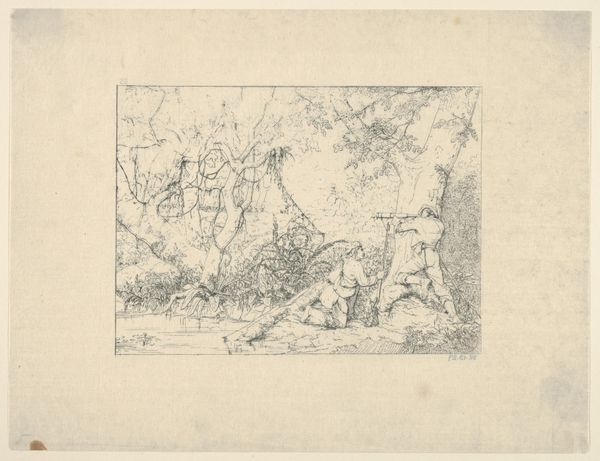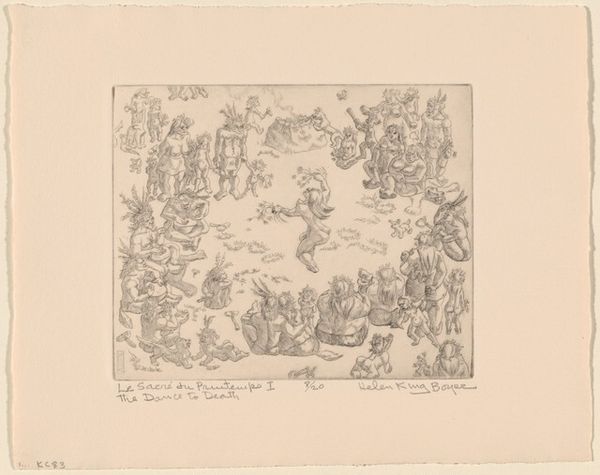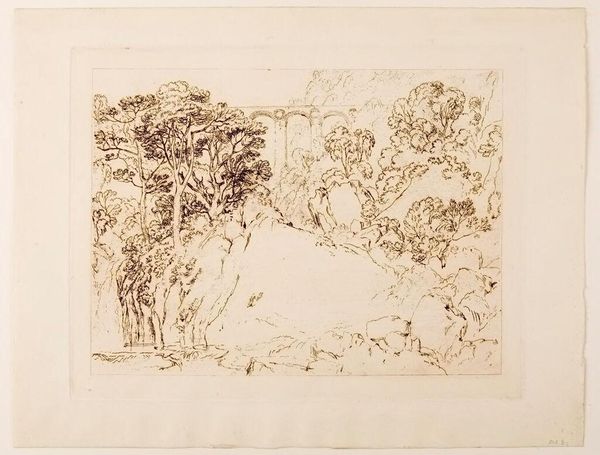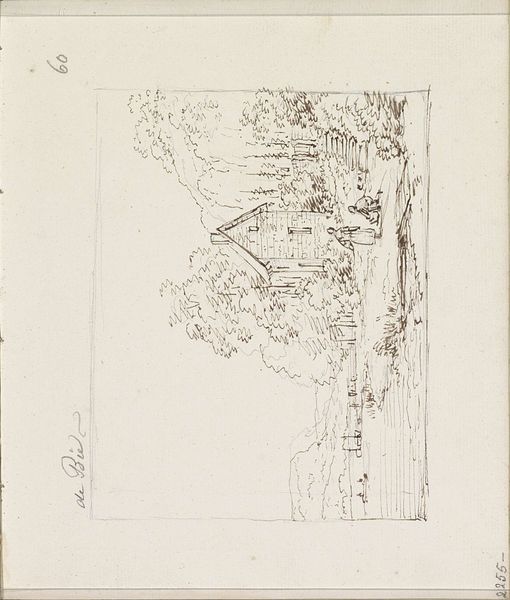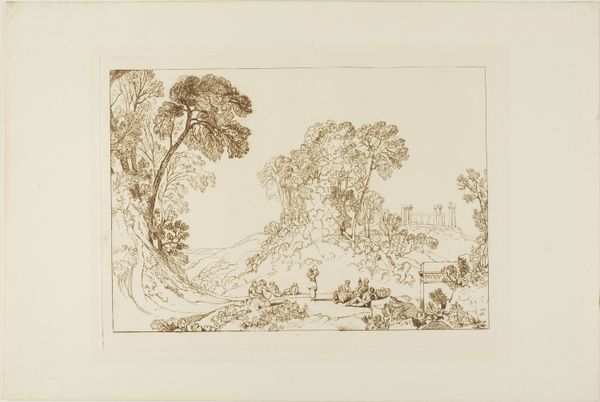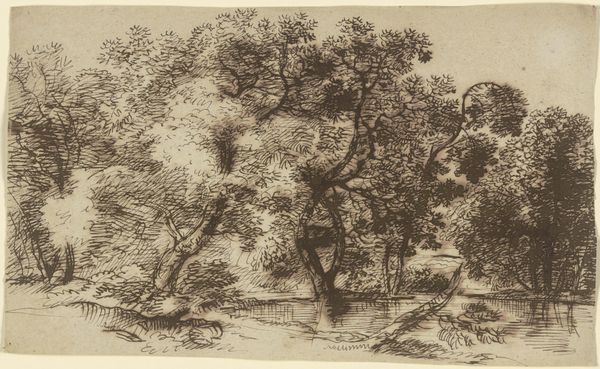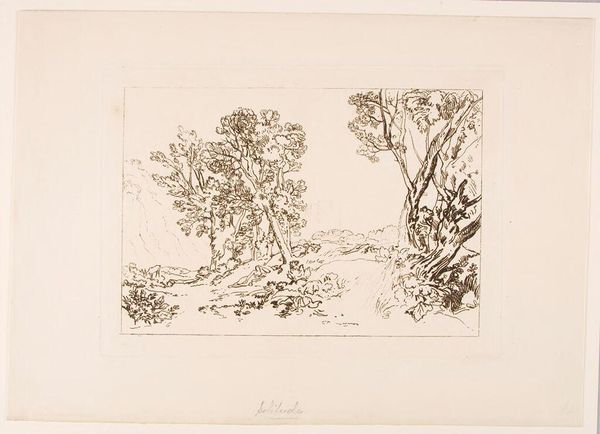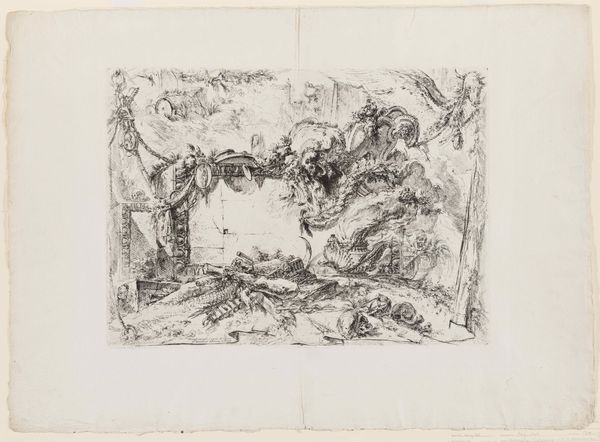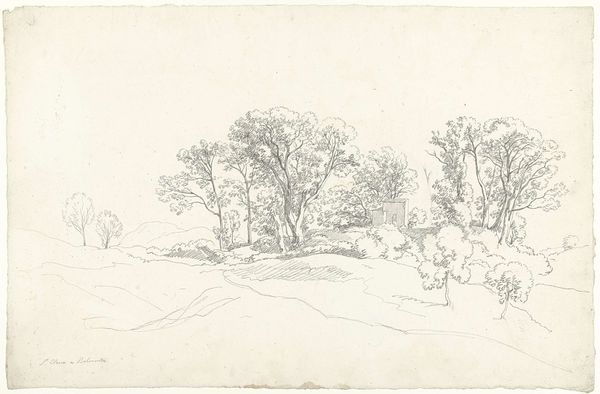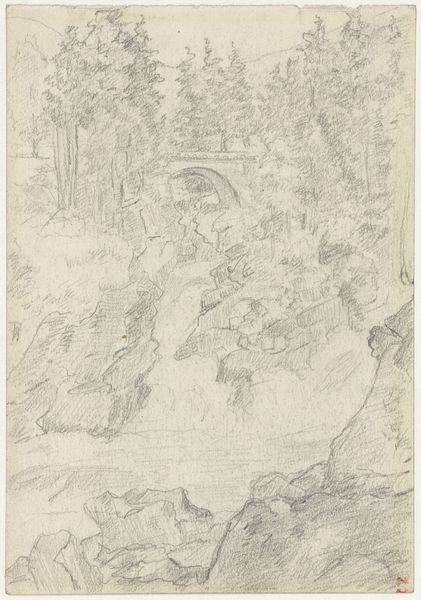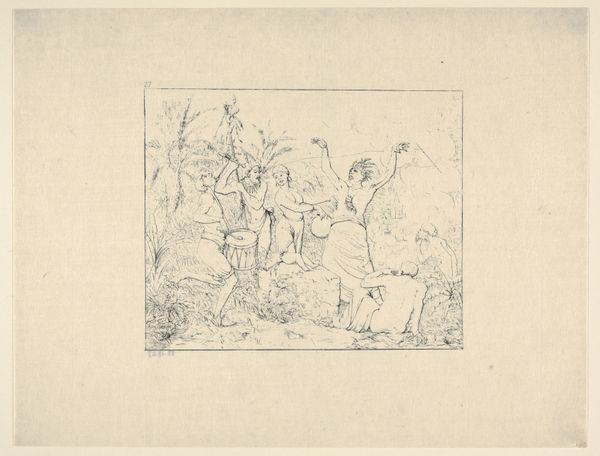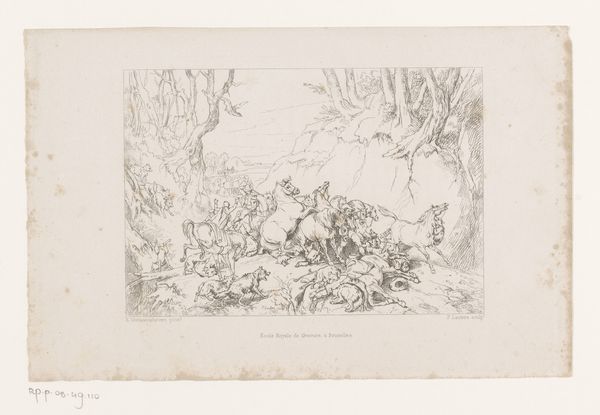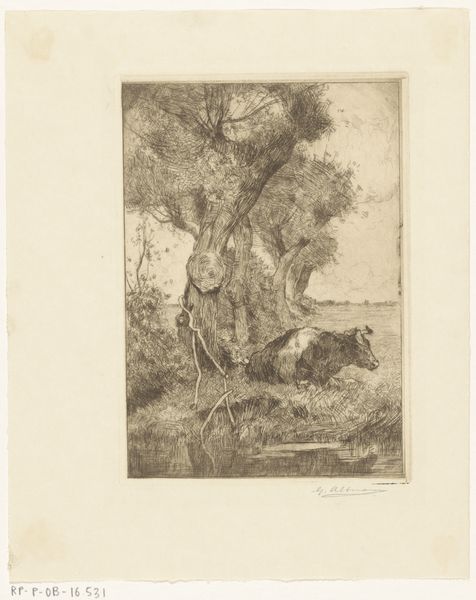
print, etching
# print
#
etching
#
etching
#
figuration
#
history-painting
Dimensions: plate: 11.27 × 13.81 cm (4 7/16 × 5 7/16 in.) sheet: 16.51 × 21.91 cm (6 1/2 × 8 5/8 in.)
Copyright: National Gallery of Art: CC0 1.0
Curator: Let's consider Helen King Boyer's "IV. Games of the Rural Villages" from 1945, created as an etching. Its bustling composition and finely-wrought details really draw you in, don't they? Editor: It does! It’s incredible that she fit so many figures into a relatively small space with etching. It reminds me a bit of Pieter Bruegel the Elder’s work with the flurry of peasant activity. What do you see in this piece that stands out regarding its creation as a material object tied to its context? Curator: Considering the context of 1945, with World War II ending, this piece presents a deliberate focus on communal activity and traditional pastimes, almost defiant. It was a way of representing cultural identity and reaffirming human connection during and after a time of immense trauma. Given the material process, how does etching itself become a tool of social commentary, would you say? Editor: I suppose that by choosing the very act of printmaking – and presumably creating multiple copies – Boyer could be commenting on the communal and democratic ideal of sharing art among many instead of just a single collector owning a painting, maybe even alluding to industrial methods in the wake of war. So, the *method* becomes part of the message? Curator: Exactly! The conscious selection of a reproductive technique challenges traditional notions of the singular, precious art object, democratizing art by producing multiples. The accessibility inherent in prints resonates with a wider audience, implicating this medium as one accessible for more classes of society beyond elites and one that honors reproducibility after immense loss of life. Consider the accessibility of materials and methods after wartime: what narratives about resilience emerge through art-making? Editor: That really changes how I see the image. The process is much more important than I initially considered. I was caught up in the figures themselves, but the conscious choice of etching and its inherent possibility of multiple reproductions becomes a subtle but powerful social statement about both the moment of creation, the moment we now view the work, and the moment(s) of its consumption, perhaps? Curator: Indeed! Thinking through materials helps uncover profound historical meanings encoded in everyday acts and images.
Comments
No comments
Be the first to comment and join the conversation on the ultimate creative platform.
